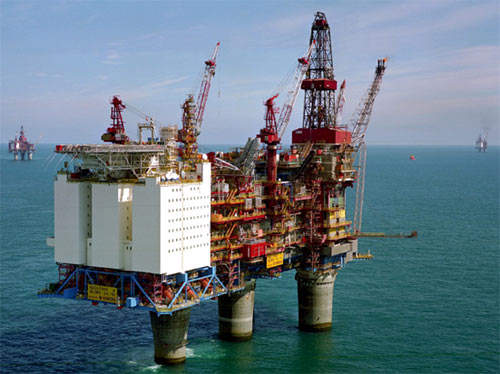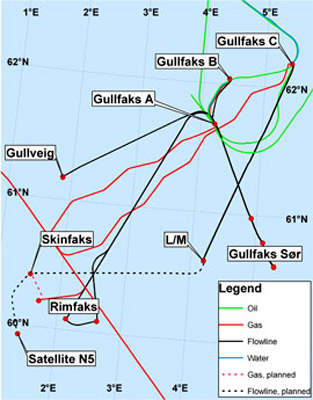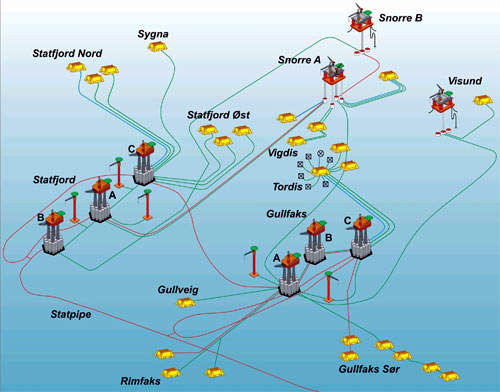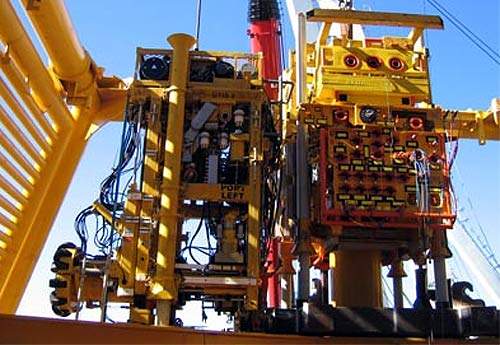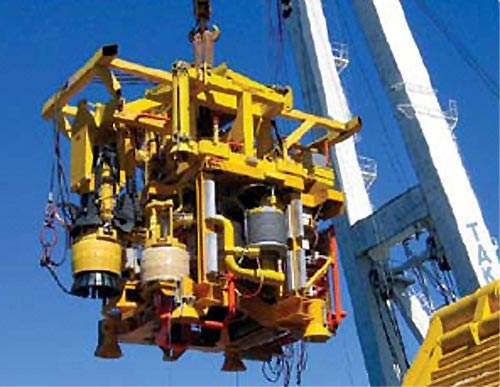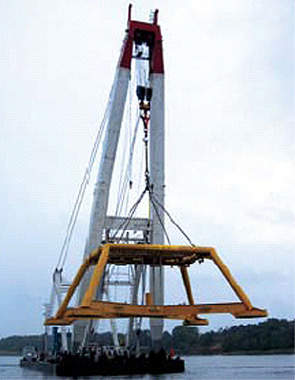Production from Statoil’s Norwegian North Sea Skinfaks development and the Rimfaks expansion project started on January 2007, when Skinfaks came on-stream at the same time as the start of the Rimfaks improved oil recovery (IOR) programme. Rimfaks has been on-stream since 2000 while proven in 2002, Skinfaks comprises several small reservoirs.
Skinfaks and Rimfaks are located in the Tampen area. The accumulation has been developed as a combined subsea facility, tied in to the Gullfaks C platform via existing infrastructure. By combining Skinfaks with several Rimfaks wells Statoil achieved an economic development of two satellites which individually would have been marginal. Total investment in the fields is put at NOK3.4bn.
Statoil has a 61% interest in the development and operates the field on behalf of its partners Petoro with 30% and Norsk Hydro with 9%.
The fields lie in blocks 33/12 (Skinfaks) and 34/10 (Rimfaks), 190km west-north west of Bergen. Recoverable reserves are estimated to be about 70 million barrels of oil equivalent.
All wells are planned to be on-stream by autumn 2007 with both fields representing 12% of the total Gullfaks licence output. When all project wells are completed, Rimfaks IOR and Skinfaks production will represent around 35% of the Gullfaks licence oil production
SKINFAKS CONTRACTS
Contracts worth a total of NOK590m were awarded by Statoil. Subsea 7 won the NOK190m contract for laying the pipelines to tie the new subsea installations back to Gullfaks C. It involved the engineering, fabrication and installation of two parallel 12km, 10in flowlines as well as a 4.5km 8in flowline.
These link the new subsea templates being installed on the two fields to existing templates on the Gullfaks satellites. Also included in the scope is the fabrication and installation of pipeline end manifolds and pre-commissioning activities. The installation of the four pipelines started from the vessel Skandi Navica and continued with the control cable installation from the Skandi Neptun.
Meanwhile, Saipem won the NOK230m contract to carry out all subsea
connection work. It used the Normand Cutter to remove existing pipe coils and replace these with four new ones to connect a tie-in manifold to the existing subsea facility. The Far Sovereign assisted in installing a number of structures and carrying out 26 subsea connections.
The NOK170m modifications Gullfaks C contract was performed by Fabricom.
DRILLING AND SUBSEA EQUIPMENT
Statoil awarded Transocean the NOK550m drilling contract. The NOK500m contract for subsea hardware went to FMC Kongsberg. This included the delivery of one subsea template and a satellite with flowbase and control distribution system, as well as six subsea trees and two manifolds (one fixed HOST with manifold and control distribution system and a tie-in manifold).
The horizontal trees were rated at 10 000psi and installed in a 140m (459ft) water depth. They have a 7in x 2in bore size. The delivery also included a subsea electrohydraulic and topside control system with a 17km (11 miles) subsea control cable.

